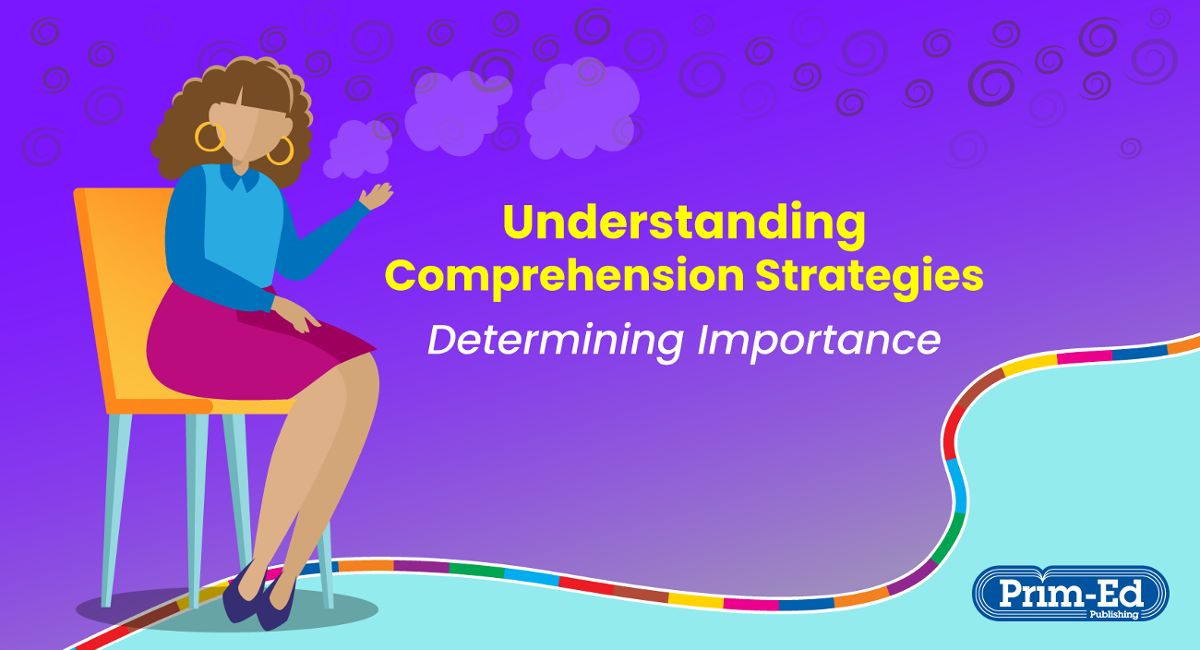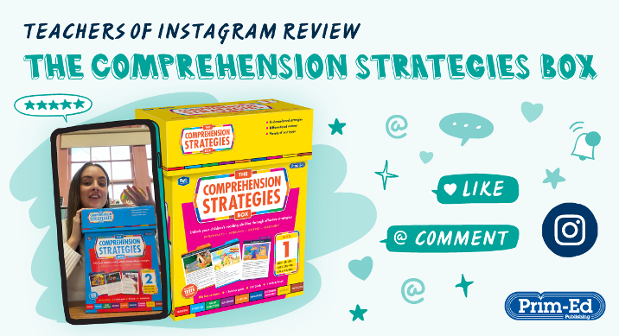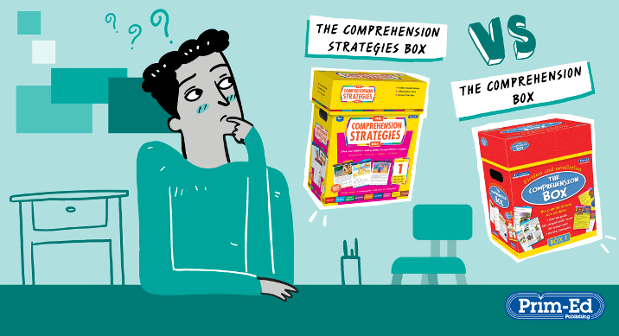- Wednesday 13 May 2020
Reading Comprehension Strategies – Determining Importance
The Determining Importance Reading Comprehension Strategy
Understanding what they read is one of the biggest difficulties a child will have while reading. It is therefore crucial that they are explicitly taught a range of strategies to encourage and master reading comprehension.
The determining importance strategy involves separating the essential (big/main ideas) from non-essential information (supporting details) or determining what is unimportant/’weeding out’ unnecessary information. This practical reading strategy enables children to recognise the most and least (although maybe interesting) important information presented in texts.
Generally, children find this strategy harder to master than many other strategies. It is a particularly useful strategy to help with the comprehension of non-fiction texts.
When using fiction texts, children should examine what characters say and do, and how these things contribute to the plot and make an impact on the story. They should also pay attention to the setting and themes of the text.
When using non-fiction texts, children should be taught to look at the features of the text (headings, illustrations, graphs, etc.) as these features often contain the most important information. Through practice, children will be able to identify the main facts and vocabulary in non-fiction texts.
To determine importance, readers use their background knowledge to:
- identify all key pieces of information or facts in a text;
- sort this information into categories; and
- order the facts in an appropriate way.
Webs and other concept/mind mapping diagrams may be useful tools to help children represent and collate ideas in a text.
Determining Importance in the Classroom
Teachers can develop children’s determining importance skills and therefore their ability to comprehend texts in a variety of ways.
Teaching children to determine importance can be taught through playing games that are easy to understand. Give the children a scenario and six related objects. They need to decide which three of the six objects are the most important three related to the scenario, and then justify their decisions. An example scenario could be playing in the snow. The six objects could be rubber boots, a woolly hat, a coat, a teddy bear, a sledge and a hot drink. The three most important (essential) items would be the boots, hat and coat, as these would keep a child warm and dry. A teddy bear and hot drink would also help to keep a child warm, but not as well as the items of clothing. A sledge would be fun to have and play on, but it is not as important as the clothes, and children could happily play in the snow without having a sledge.
For younger children, introduce the strategy using an image or a cartoon. After viewing the image, children should tell, in one or two words, ‘who’ or ‘what’ the image is about and discuss. Older children should do the same with a text instead of an image. They should then say what is most important about the ‘who’ or ‘what’. Other things in the image or text can then be discussed. These are the less-important details. The teacher should ask questions that focus on these less-important details, emphasising that whilst these details help make the picture or text interesting, they are not the most important or essential. Ensure that children understand that adding additional details does not keep the main idea brief. As with the summarising strategy, paraphrasing plays an important part.
Once the above activity has been practised and the children are able to determine which parts of an image are important, progress to short texts for younger children and longer texts for older children. The children should look at the whole text, including the illustration, heading and any bold words (if applicable) to gain information. Read the first sentence or paragraph, discussing a little piece of the text each time. Continually ask questions like Who or what is the sentence or paragraph about? and What is the most important thing about the ‘who’ and ‘what’, and why? As reading progresses, ask Is this detail important? This encourages children to sort information into important and unimportant/non-essential details.
Children should read a prepared text and afterwards be given statements about the main ideas, some of which are correct and some incorrect. The children should discuss the statements and decide which ones are correct.
Children can use different methods to help sort important ideas/parts of a text from the unimportant. They could annotate the important parts of a text using sticky notes or they could be given two sheets of paper, one on which to write important ideas and the other on which to write unimportant ideas.
Templates could be used to help children record in an organised way. The children can look at each sentence or paragraph in turn, record ‘who’ or ‘what’ it is about, decide the most important thing about the ‘who’ or ‘what’, and state why they believe the information is important.
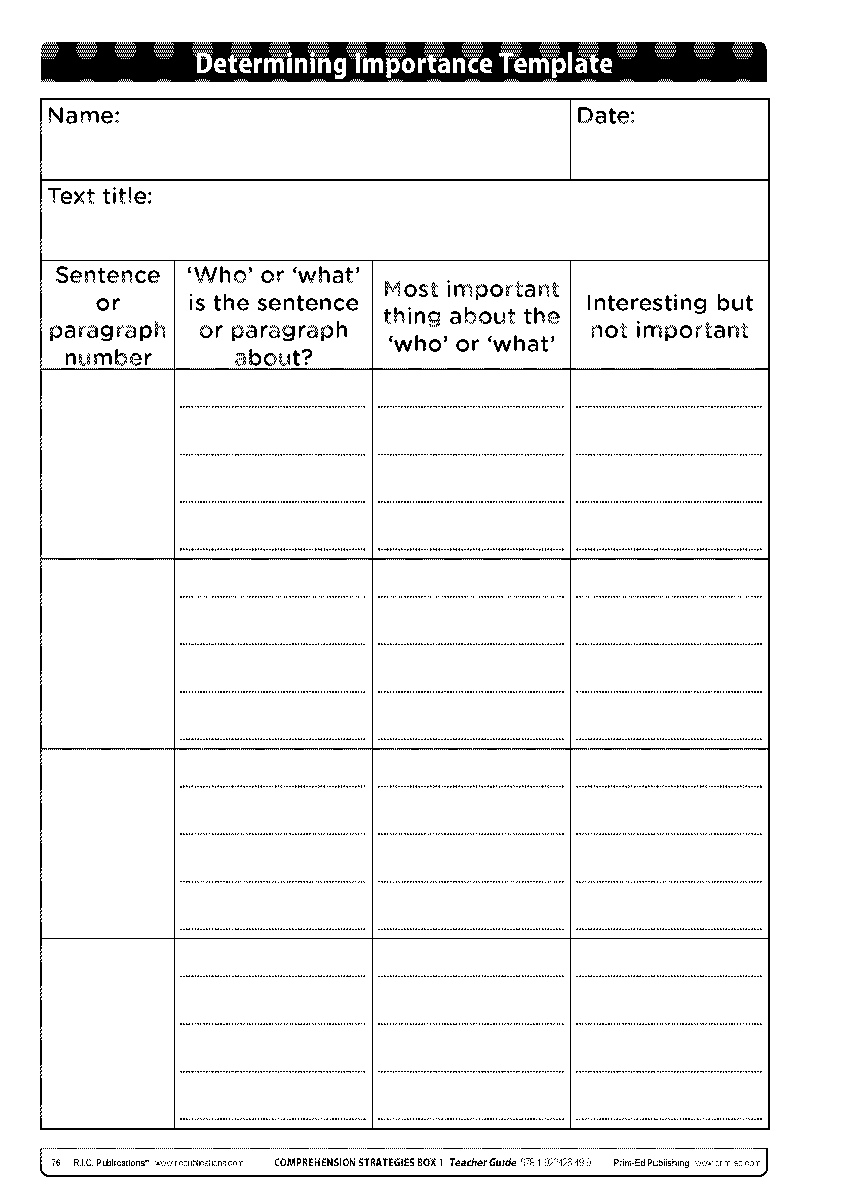
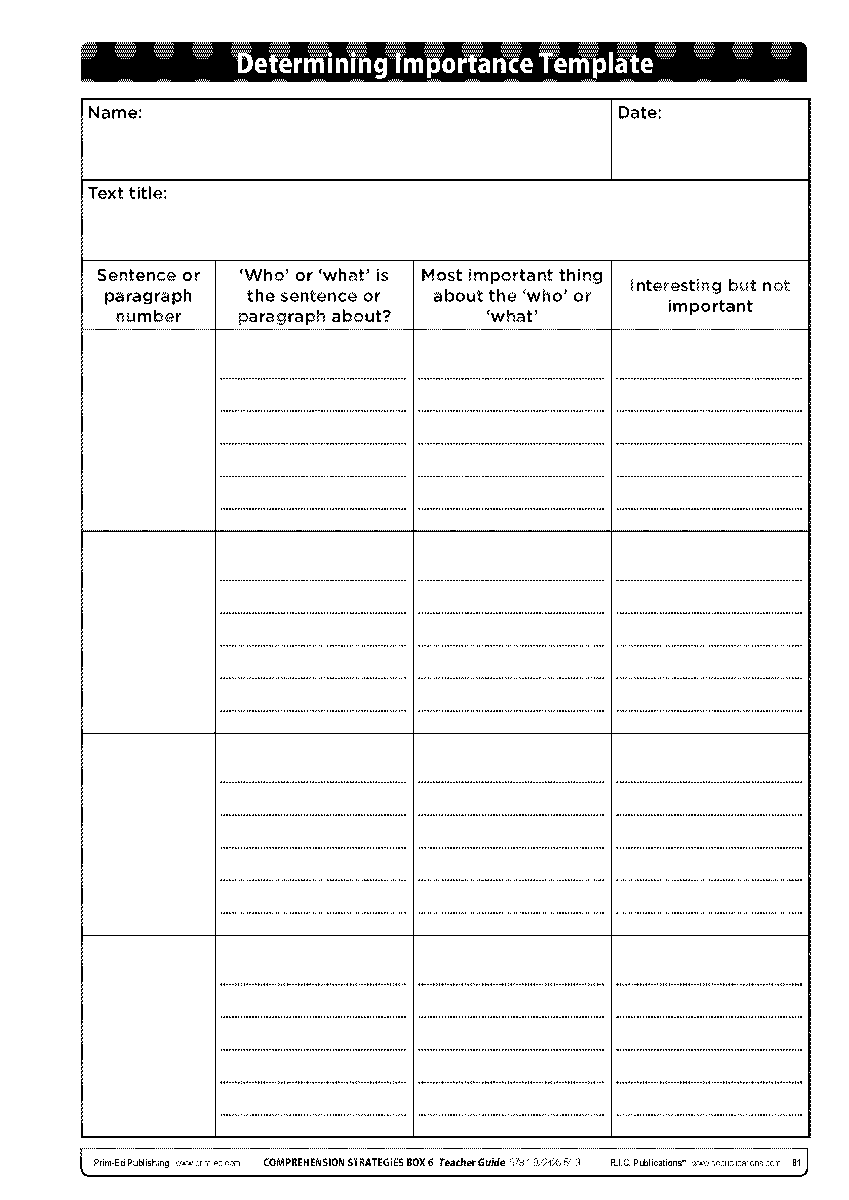


Templates from Teacher Guides in The Comprehension Strategies Box series.
Determining Importance in The Comprehension Strategies Box
Determining importance is the seventh of nine reading comprehension strategies covered in the The Comprehension Strategies Box series. This boxed series, written at six levels for the six main primary school years, consists of full-colour, differentiated, fiction and non-fiction reading cards which cover nine different comprehension strategies, a comprehensive teacher guide that explains the strategies and how to use the series, and an activity book with photocopiable activities to enable children to focus on and practise each strategy.
Each reading strategy is introduced in the teacher guide, with a page of background information for teachers to familiarise themselves with.
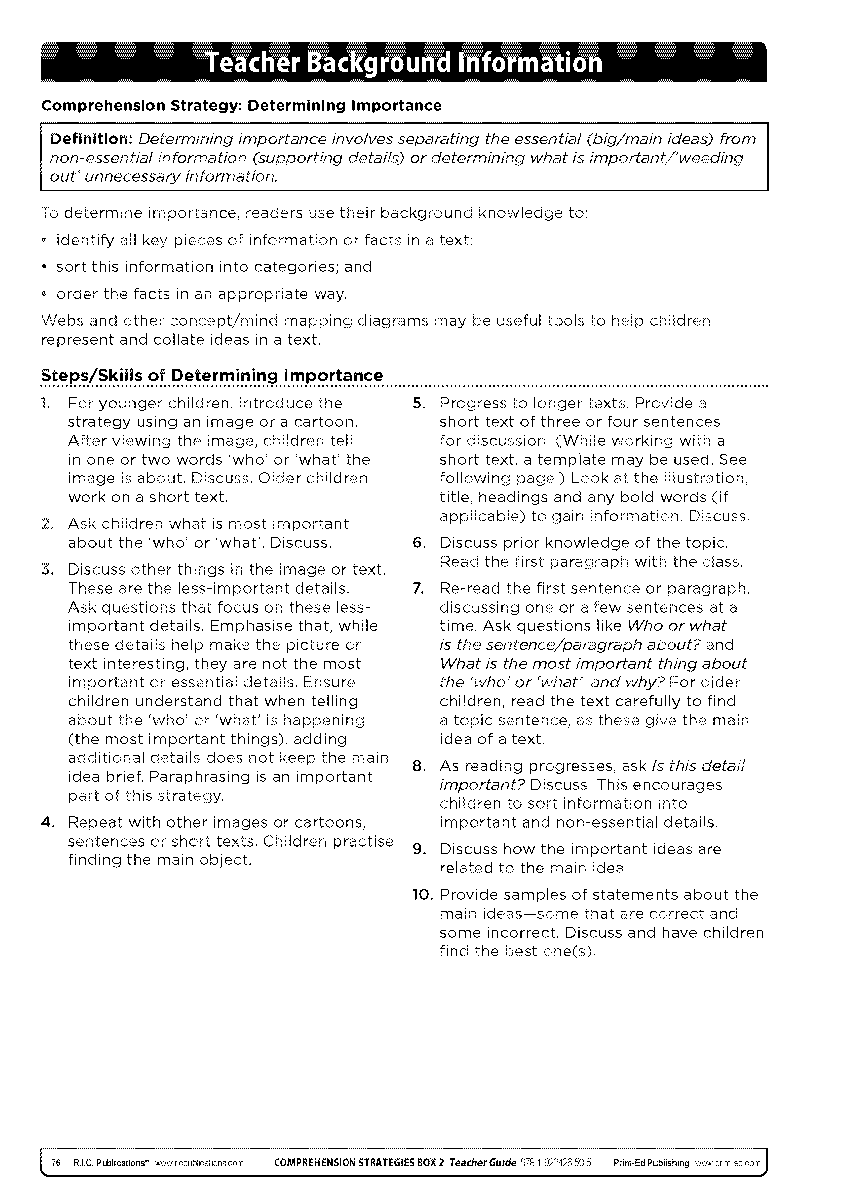
Sample page from Teacher Guide 2 in The Comprehension Strategies Box series.
The teacher should use the modelling text provided to introduce and demonstrate the determining importance comprehension strategy to their class. The illustrated text should be displayed onto an interactive whiteboard, to enable the teacher to conceal and reveal parts of the text to the children, and highlight text and add annotations as appropriate. The steps the teacher should go through to model and teach the strategy are clearly laid out in the teacher notes. The modelling is oral and includes what the teacher should say at various stages of reading the text; for example, the title, the first set of dialogue, the information given by the narrator, and so on. To start, the children are directed to look at the title and illustration and discuss the clues that these give. Next, they are directed to look at the layout of the text and what this tells about the text type. The main part of the modelling activity involves the children examining and answering questions about the play itself–the sets of dialogue and the information given by the narrator. Finally, a list of main ideas should be read to the children, for them to discuss and from which to choose the best one.
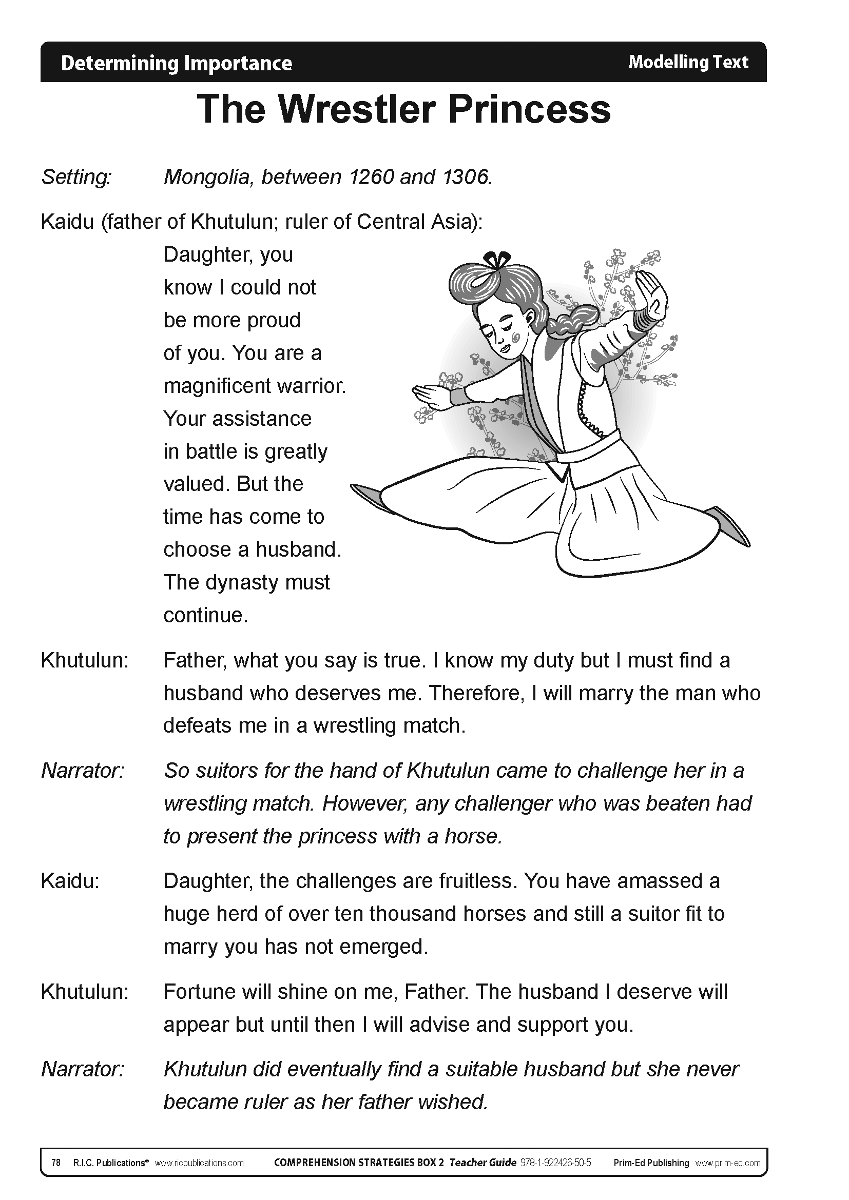
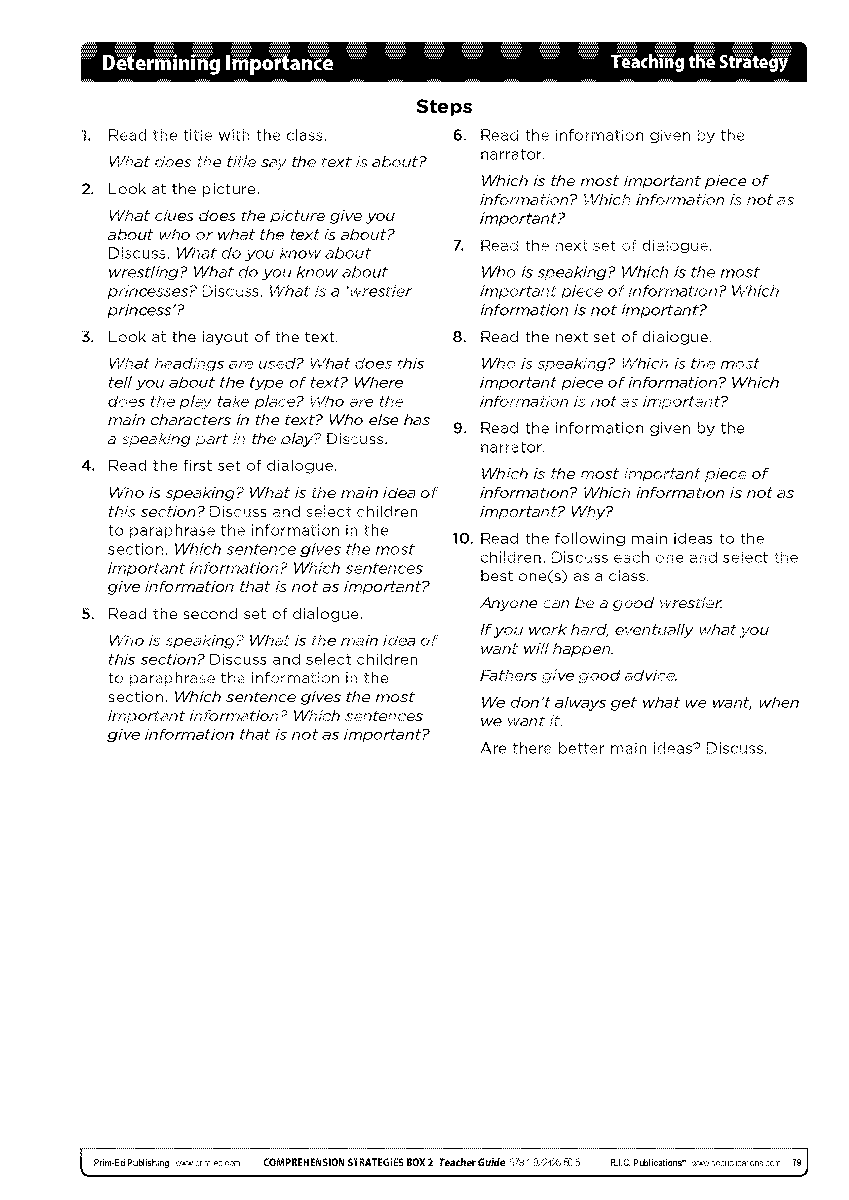

 Sample pages from Teacher Guide 2 in The Comprehension Strategies Box series.
Sample pages from Teacher Guide 2 in The Comprehension Strategies Box series.
In a similar way to how the modelling text was presented and used with the class, the teacher should then present the sharing text. This can either be another oral activity or children may work with each other to answer the questions and practise the strategy together.
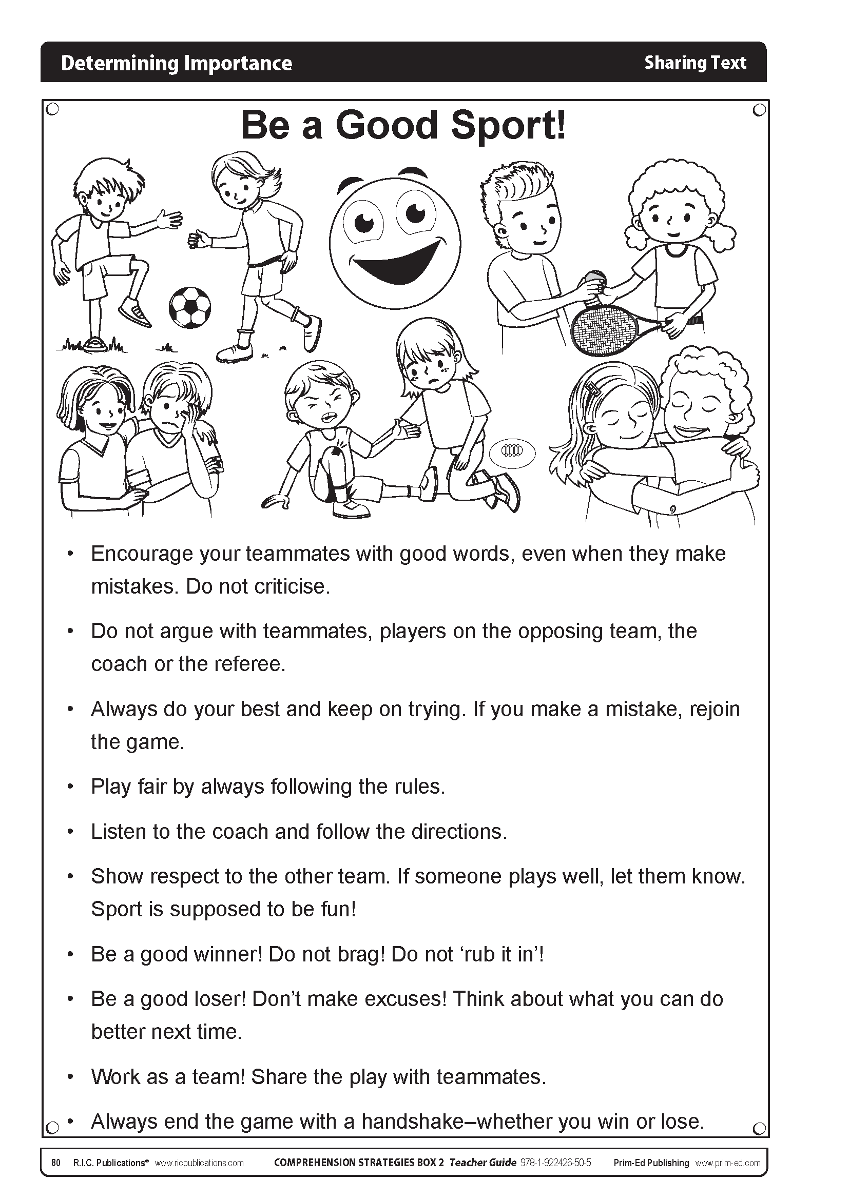
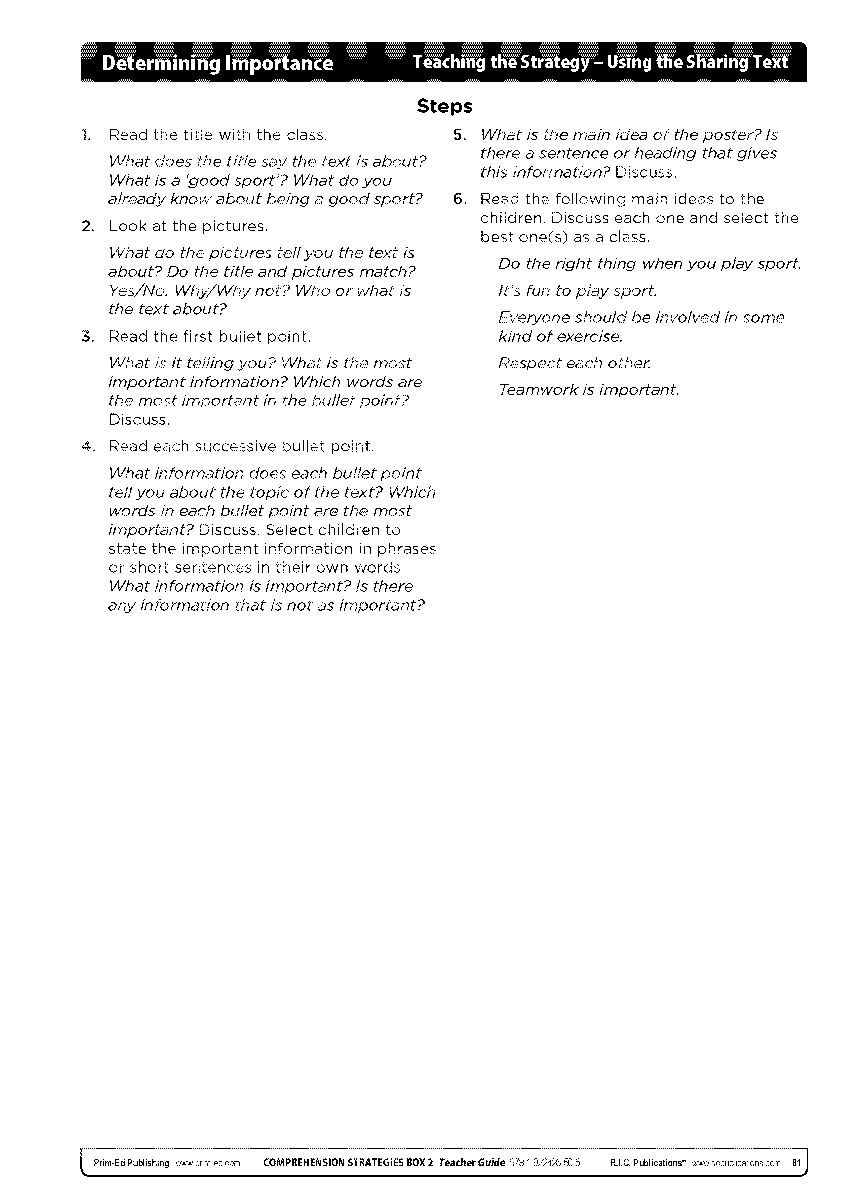


Sample pages from Teacher Guide 2 in The Comprehension Strategies Box series.
The children can then work on some of the activity cards, either individually, in pairs or in small groups. The teacher should select a particular level of card (1, 2 or 3), depending on the reading level of the child or group. A placement test is provided to help with this. There are two texts on each card, so children can practise the determining importance strategy using more than one text. The children should use the corresponding resource sheets in the activity book which pose questions and activities that children will need to use determining importance skills to answer.
ART: Box 2, Card 2A The Hare and the Hedgehog and AB 2 pages 78 and 79.
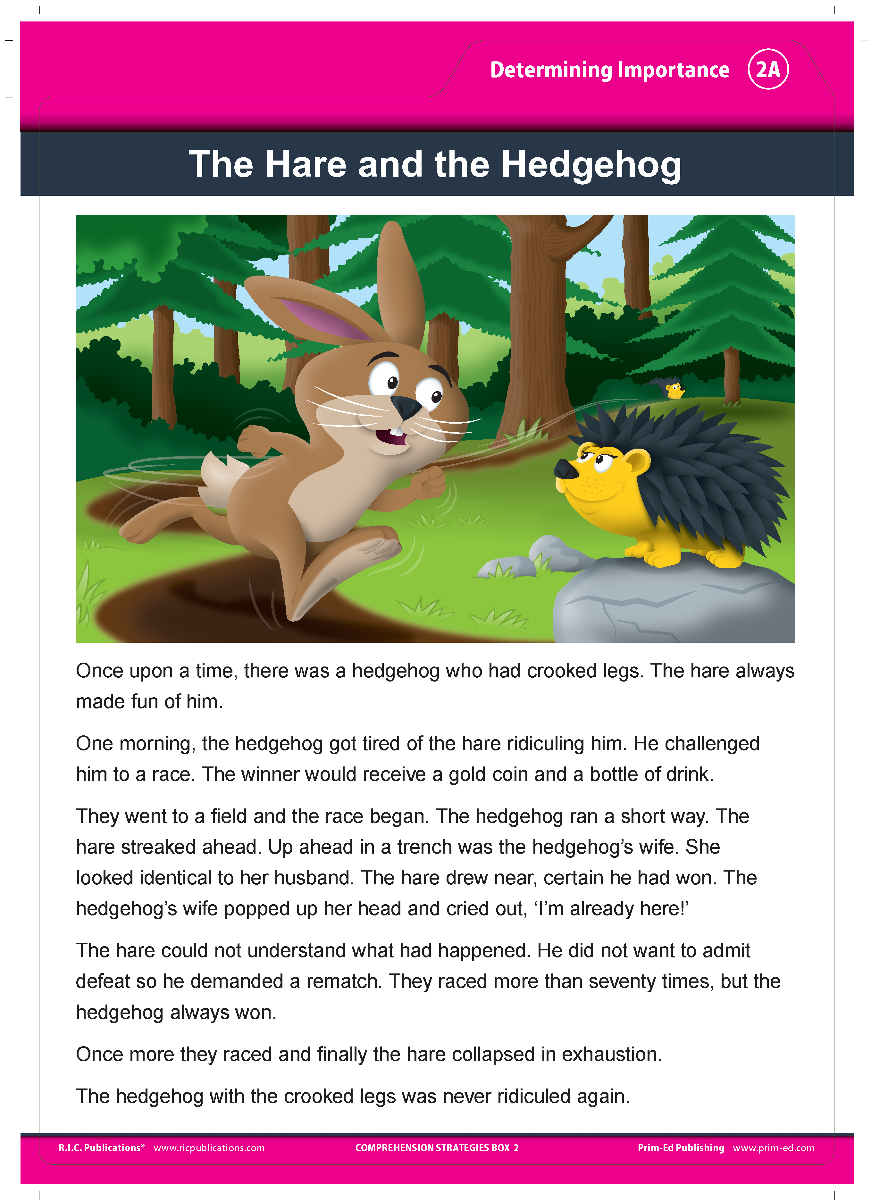
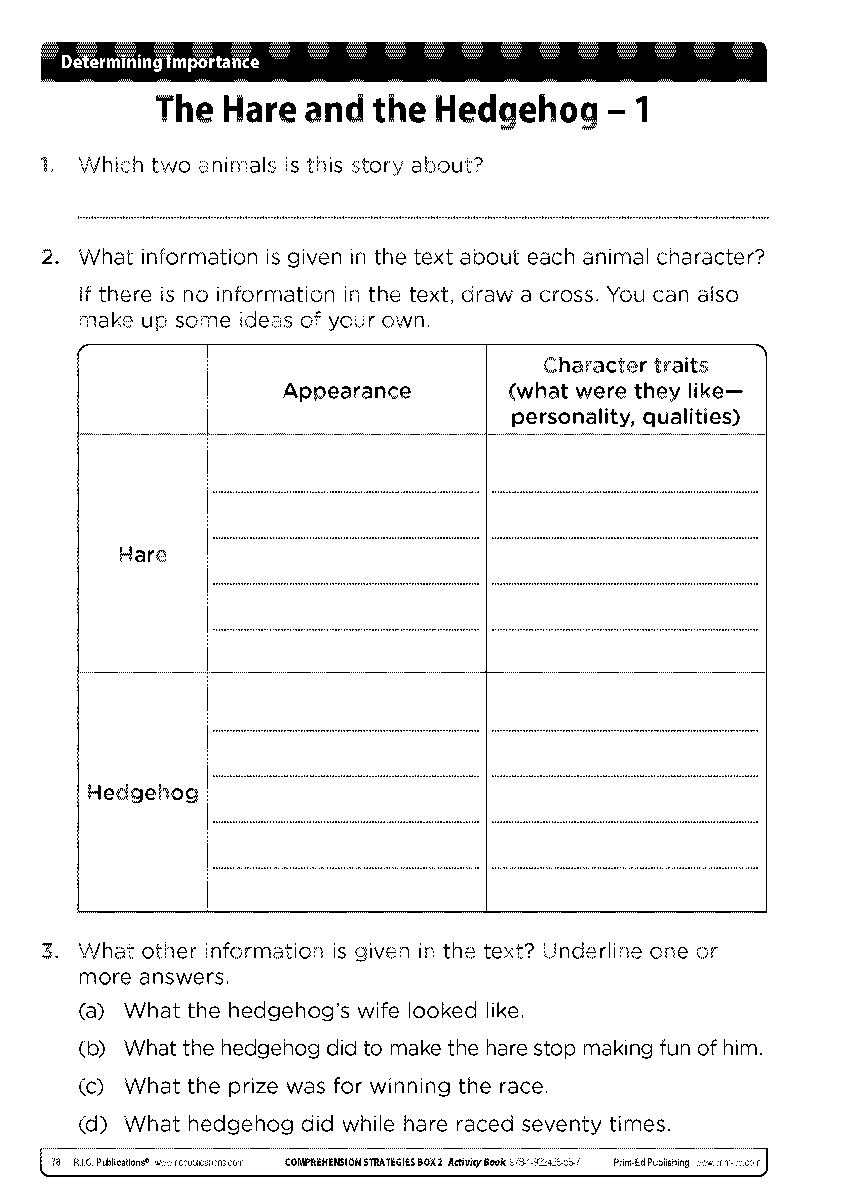
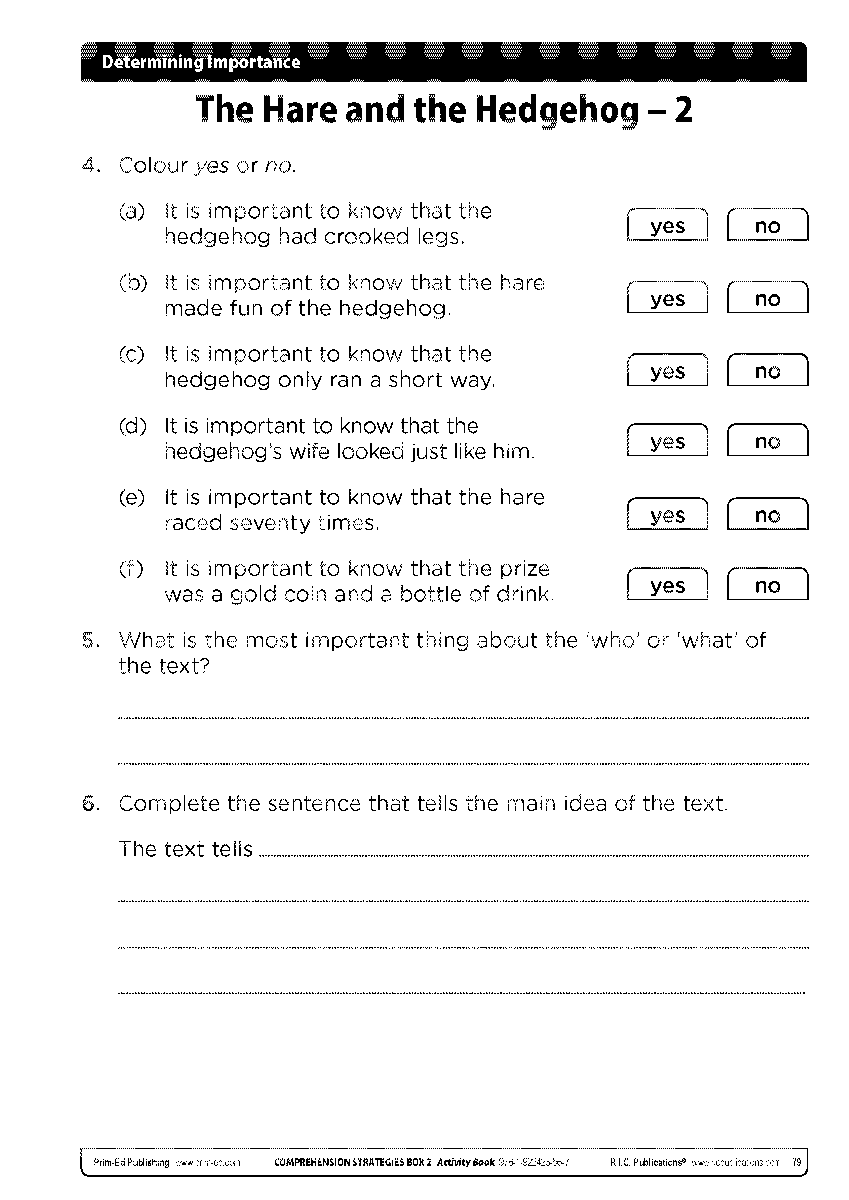



Card and sample pages from Activity Book in The Comprehension Strategies Box 2.
The teacher can use the assessment text in the teacher guide and the corresponding assessment questions to assess how well each child has understood and can use the determining importance comprehension strategy.
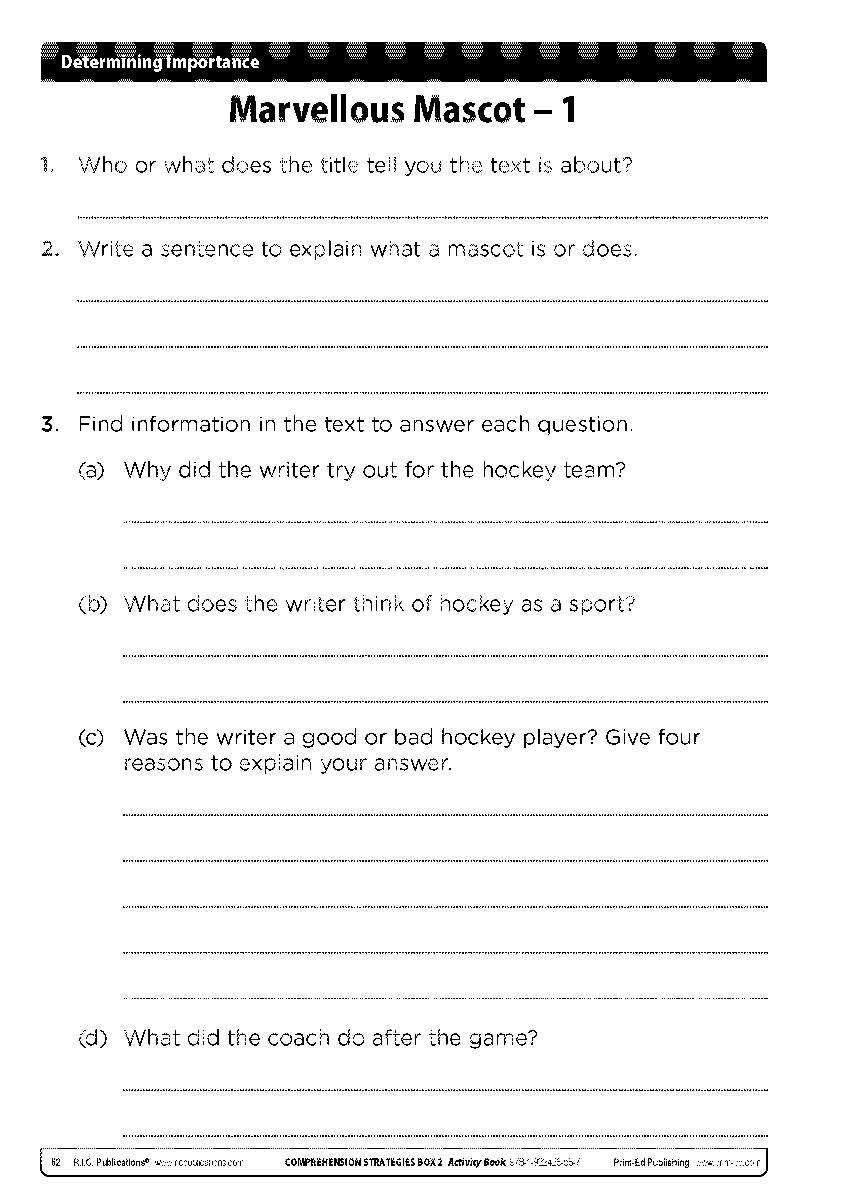
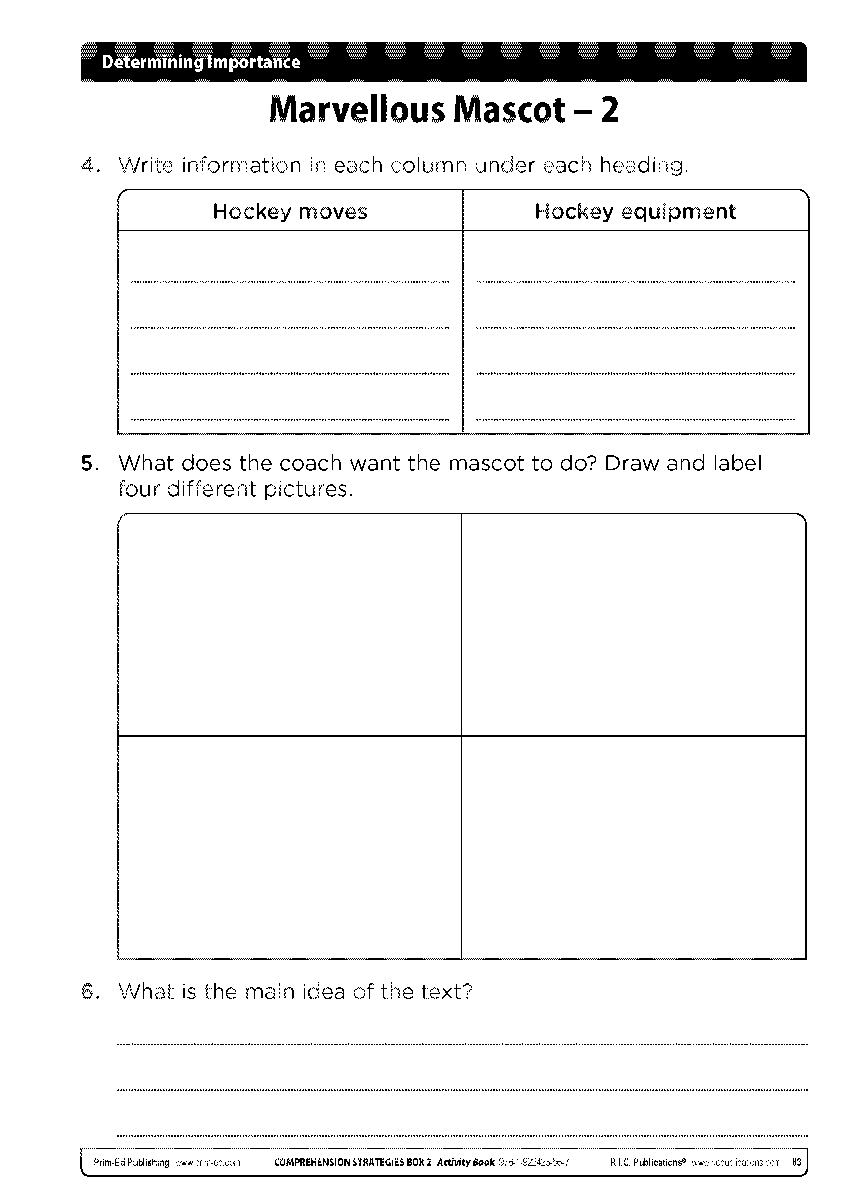


Sample pages from Teacher Guide 2 in The Comprehension Strategies Box series.
More Information About The Comprehension Strategies Box:
For further information about The Comprehension Strategies Box and to view sample cards and pages from other levels, check out the series page here.
